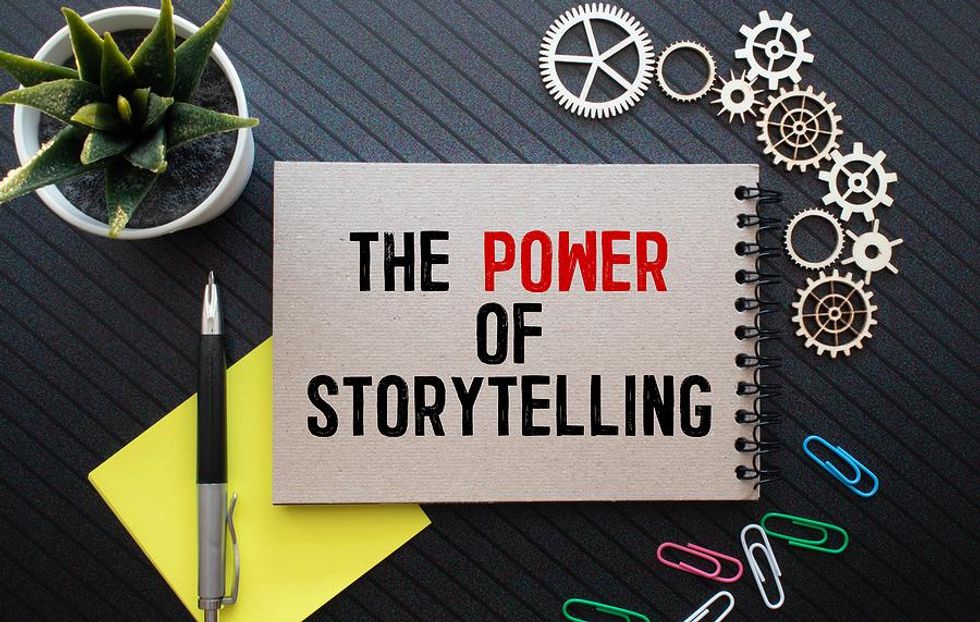
My work at the National Football League in Officiating Administration allowed me the opportunity to collect, analyze, and report data. Looking back at my career, I realized I was telling a compelling story.
For example, when I completed the annual budget, I summarized that budget into a one-page document showing last year’s budget at the top of the page. In the middle of the paper, I outlined all the current changes leading to the total current budget total at the bottom of the page. I call this my budget walk. I gave this one-page budget walk to my manager so that when he discussed the department’s budget with his superiors, his discussion was a 30,000-mile-high view—strictly summarized.
Storytelling like this helps an audience connect with you so they trust you. When you come across as human and do not force numbers their way, you’ll seem more, trustworthy—especially if the storytelling is relatable as it becomes more memorable. If the audience can see themselves as the ‘character’ in your story or realize it relates to them, they won’t forget your business easily.
Data storytelling is a way to communicate insights using data, visuals, and narrative. Plenty of data is collected and must be presented in a way that is easy to comprehend.
Stories Engage Your Audience

Bigstock
Numbers do matter, but they mean much more when built based on a story. Put yourself in the audience’s shoes. Would you want to sit there while someone throws numbers and data at you?
A Nielsen study revealed that our brains are far more engaged by storytelling than by facts alone. The brain processes images 60 times faster than words, and when we read data, only the language parts of our brain work on decoding the meaning. But when we read stories, every part of the brain we’d use if we experienced the story also becomes activated.
Data analysts extract patterns in data. By adding storytelling skills, they can convey information about the data that helps decision-making. The benefit of the analyst being the storyteller is that they are the person who knows the context around the data. As engaging as stories can be for organizations, the best ones are those that evoke emotional reactions. If you tell a story that people genuinely connect with and relate to, they’ll likely believe in you. Some of the best storytelling in business comes from mistakes, failures, and past business struggles.
How To Create Stories

Bigstock
1. Begin with a pen-and-paper approach
a) Visually engaging presentations will inspire your audience
b) Scripting down your ideas and flow before you start structuring your story is essential to your final product
2. Dig deeper to identify the sole purpose of your story
a) Identify closely what the idea of your story is. Ask yourself, “What am I giving with this story?" It’s never the story alone but what the story can do to make decisions better. What you’re displaying is the idea of better decision-making or analytics.
b) Develop a personal “passion statement.” Tell your prospects why you are genuinely excited about working with them in one sentence. Your passion statement will be remembered long.
c) The most critical thing you can do to improve your analytics is to have a story to tell. The flow you can generate can have much friction in your result.
3. Use powerful headings
a) Create your heading, a one-sentence statement for your story, visual, or analysis. The most effective headlines are concise, specific, and offer a personal benefit.
b) Remember, your heading is a statement that offers your audience a vision of a better understanding. It’s not about you. It’s about them.
4. Design a roadmap
a) Create a list of all the key points you want your audience to know about your story, visual, or analysis.
b) Categorize the list until you are left with only three major message points. This group of three will provide the verbal roadmap for your story.
c) Under each of your three key messages, add supporting evidence to enhance the narrative. These could include some or all of the following: personal stories, facts, examples, analogies, etc.
5. Conclude with brevity
a) Now that you have put forward all the points of your story, your conclusion should be short and powerful. In my report, I mentioned 3-4 liner summaries to conclude why to buy a particular stock.
5-Point Plan That Helps Deliver A Strong Impact

Bigstock
A five-point plan that helps deliver a strong impact is:
1. Deliver a story or statement that arouses the audience’s interest.
2. Pose a problem or question that must be solved or answered.
3. Offer a solution to the problem you raised.
4. Describe specific benefits of adopting the course of action outlined in your solution.
5. State a call to action.
Lastly, marketing campaigns must avoid cheap tactics and focus on storytelling. Honey Bunches of Oats pulled on the heartstrings by inviting actual employees to participate in the campaign and share their endearing qualities. You can sense the passion in their stories, making the business more memorable.
- How To Connect With Potential Employers During Your Job Search ›
- 4 Steps To Writing A Disruptive Cover Letter ›
- What’s YOUR Career Story? Tips For Rewriting Your Professional Narrative ›
- How To Navigate Strategic Roadmaps In Business - Work It Daily ›
- 5 Powerful Ways To Inspire Emotion With Storytelling - Work It Daily ›
- 7 Ways To Make Dense Content Relatable - Work It Daily ›

 Bigstock
Bigstock
 Bigstock
Bigstock
 Bigstock
Bigstock



